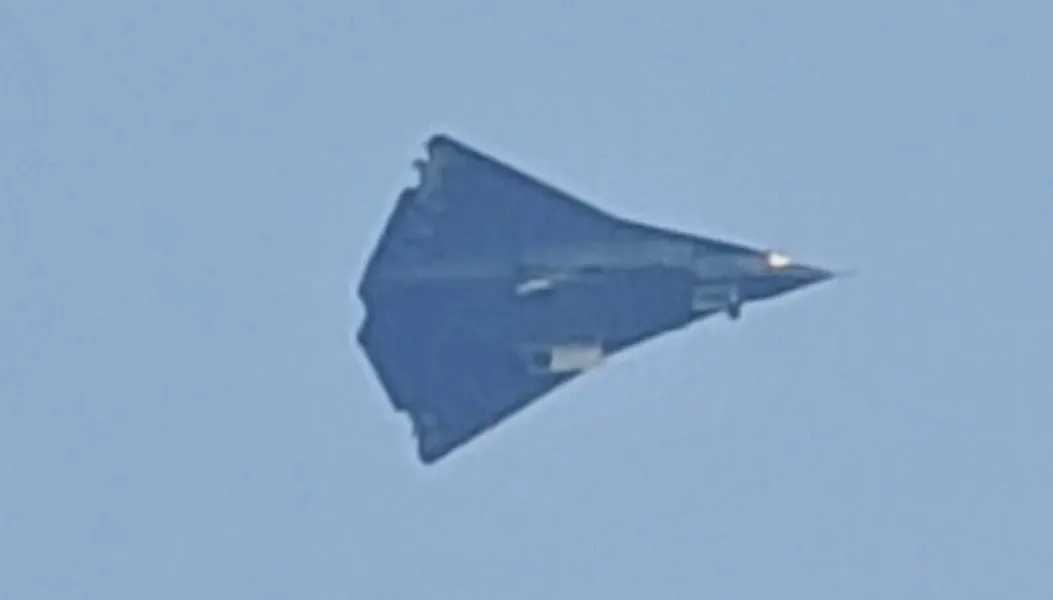Breaking News: China's Next-Gen 6th-Generation Fighter Jet Successfully Completes First Flight.
26 Dec, 2024 - 9:17 Defense News Aerospace 2024
On December 26, 2024, a major milestone was achieved in the field of military aviation as China’s next-generation (6th-gen) fighter jet successfully made its first flight. The event, which was shared through videos released on social media, marks a significant advancement in China's aerospace capabilities. It places the country in direct competition with other global superpowers in the race to dominate the future of air combat. This flight has generated significant attention and speculation regarding China's ambitions to shape the next era of military aviation.
The new fighter jet, although its exact specifications remain confidential, is believed to feature a range of cutting-edge technologies. Among these are advanced stealth capabilities, which will make the jet harder to detect by enemy radar, and next-generation avionics systems. Additionally, the aircraft is rumored to integrate artificial intelligence, enhancing its ability to process vast amounts of data and improve decision-making in real-time combat scenarios. One of the most anticipated features of this new jet is its potential for seamless coordination with unmanned aerial vehicles (UAVs), which could redefine manned-unmanned teaming in future warfare. This would allow for greater flexibility and precision in combat operations, as the aircraft can work in tandem with drones to conduct reconnaissance, strike missions, or provide a defensive shield.

Captured from a video: China's next-generation 6th-generation fighter jet soaring into the skies during its historic first flight on December 26, 2024. (Picture source: Chinese Social Network)
Another promising feature of China's 6th-gen fighter is its potential to carry hypersonic weapons. The country has made significant strides in developing hypersonic technologies, and this fighter jet could serve as a platform to deploy these high-speed, long-range weapons. Furthermore, it is expected that the aircraft will be equipped with state-of-the-art radar systems capable of detecting and engaging threats at greater distances, giving the pilot a crucial advantage in modern air battles. Some experts also speculate that this jet could incorporate directed-energy weapons or other advanced countermeasures to defend against future missile threats.
The successful flight of China’s 6th-generation fighter jet has profound implications not only for the PLAAF (People’s Liberation Army Air Force) but for the global balance of military power. With multiple countries working on their own 6th-generation fighter programs, China's latest achievement highlights the accelerating pace of technological advancement in air combat. In particular, the United States, which is developing its own next-generation air superiority fighter under the Next Generation Air Dominance (NGAD) program, will likely view China’s progress as a catalyst to fast-track its own plans. The U.S. Air Force has already conducted successful flight tests of prototypes for its NGAD program, with an expected operational rollout around the 2030s. The successful debut of China’s fighter will likely encourage the U.S. to further invest in artificial intelligence, advanced stealth, and hypersonic weapons to ensure its continued dominance in the skies.
In Europe, the United Kingdom, Italy, and Japan are collaborating on the Global Combat Air Program (GCAP), which aims to produce a next-generation fighter jet by the early 2030s. This program is designed to replace the Eurofighter Typhoon and will likely incorporate many of the same advanced technologies expected in China's 6th-gen fighter, including enhanced stealth and autonomous systems. The developments in China are likely to influence the direction of European fighter programs, accelerating efforts to ensure that these countries do not fall behind in the race for air superiority.
Russia, while less vocal about its 6th-gen fighter program, is also working on advancing its military aviation technology. The Su-57 Felon is the cornerstone of Russia’s efforts to modernize its air force, though it remains uncertain whether Russia will be able to match the technological advancements being pursued by China and the U.S. in the coming years. Russia’s approach to stealth and air combat has typically emphasized versatility and raw power, but it will likely need to integrate more sophisticated technologies to compete with the new generation of fighters coming out of China and the West.
China’s new fighter is part of a broader strategy to modernize the People’s Liberation Army (PLA) and project power well beyond its borders. This plan aligns with China’s goal of becoming a global military superpower by 2049, marking the centennial of the founding of the People’s Republic of China. The 6th-gen fighter is just one part of this broader vision, which also includes the development of the H-20 stealth bomber, advancements in missile technology, and the expansion of China’s naval and space forces. Experts believe that China is moving towards a "triad" of capabilities, focusing on cutting-edge fighters, bombers, and unmanned systems to maintain a technological edge in future conflicts.
This focus on technological superiority is also driving China's push to integrate Artificial Intelligence (AI) across all of its military platforms. The fusion of AI with fighter jets like the new 6th-gen aircraft will likely allow for real-time decision-making based on vast amounts of data collected from various sources, including drones and satellites. This ability to coordinate across domains could be the key to winning future wars, as it will enable China’s military to respond to threats faster and more efficiently than ever before.
The successful flight of China’s 6th-gen fighter jet represents a new chapter in the global arms race. As other nations scramble to develop their own next-generation aircraft, the competition for air superiority is poised to intensify. The U.S., Europe, and Russia will need to accelerate their own programs to ensure they remain ahead of China's growing military capabilities. With the emergence of advanced fighter jets, hypersonic weapons, and unmanned systems, the landscape of air combat is set to undergo a dramatic transformation. As we move toward the middle of this century, the sky may be filled with not just manned aircraft, but a new breed of collaborative, autonomous, and hyper-speed weaponry, with China poised to play a dominant role in shaping this future.
文末附上机翻文本供参考理解文意:

该段报道转载自:
https://www.armyrecognition.com/news/aerospace-news/2024/breaking-news-chinas-next-gen-6th-generation-fighter-jet-successfully-completes-first-flight
仅作英语学习使用,相关真实性以官方发布为准。




